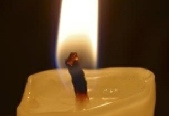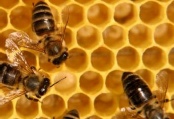

Candle & Soap Company

Candles Are Made From…
Beeswax & Tallow.
Stearic, Soy, & Paraffin.
Before we get into all the different types of fuel that can be used to make candles, we must first discuss the wick. The wick is the string in the middle of the candle that makes it burn.
“What’s the big deal,” you say? String is string, right? Wrong! Since 1800, all candle wick is made from braided cotton twine.
There are hundreds of types and sizes of braided twine, used for candle wick. Usually it is made from cotton. Choosing the right wick is critical to the proper burning of your candle.

Now we can talk about fuel. Candles are mostly fuel. Everything on a candle that is not wick, is fuel. Fuels that can be made into candles, must be solid at room temperature.
Generally, we think of all candles being made from wax.. Technically, this is not correct. Most candles are, and have been made from oils that happen to be solid at room temperature.
Before the process of refining petroleum gave us Paraffin, for centuries what people used for candles was animal fat. These were called “tallow” candles. Can you imagine using a collection of small grease fires to light your home? Not nice.
Other than various animal fats, an early wax used to make candles was beeswax. Beeswax is a natural wax, not an oil. Beeswax makes the highest quality candles. They burn the longest, cleanest, and drip the least.
Beeswax is the honeycomb of the beehive. The honey is extracted. The dust, bees, and debris are filtered out. What’s left is pure beeswax..

Another natural wax that is used to make candles is bayberry wax.. It is made from boiling the wax coating off the berries of the bay bush. There are other natural waxes that can be used to make candles, such as palm wax, and carnauba wax, but they are rare.
From the tinkering of various scientific types, we gained stearic acid in the early 1800’s. Stearic acid is a fatty acid that is derived from animal fat through distillation. Candles made from this material are called “Adamantine” candles.
Adamantine candles are still the best candles, next to beeswax. When they came along in the 1800’s, they were a major improvement in home lighting. They dominated, until refined petroleum gave us kerosene and paraffin.
In the late 1800’s, refined petroleum became cheap and plentiful. Some of the first products from this were kerosene and paraffin. Most modern commercially made candles are paraffin, a petroleum by-product.
The newest candle wax is soy wax. Soy wax is made from hydrogenated soybean oil. It is similar to vegetable shortening, and burns like paraffin.